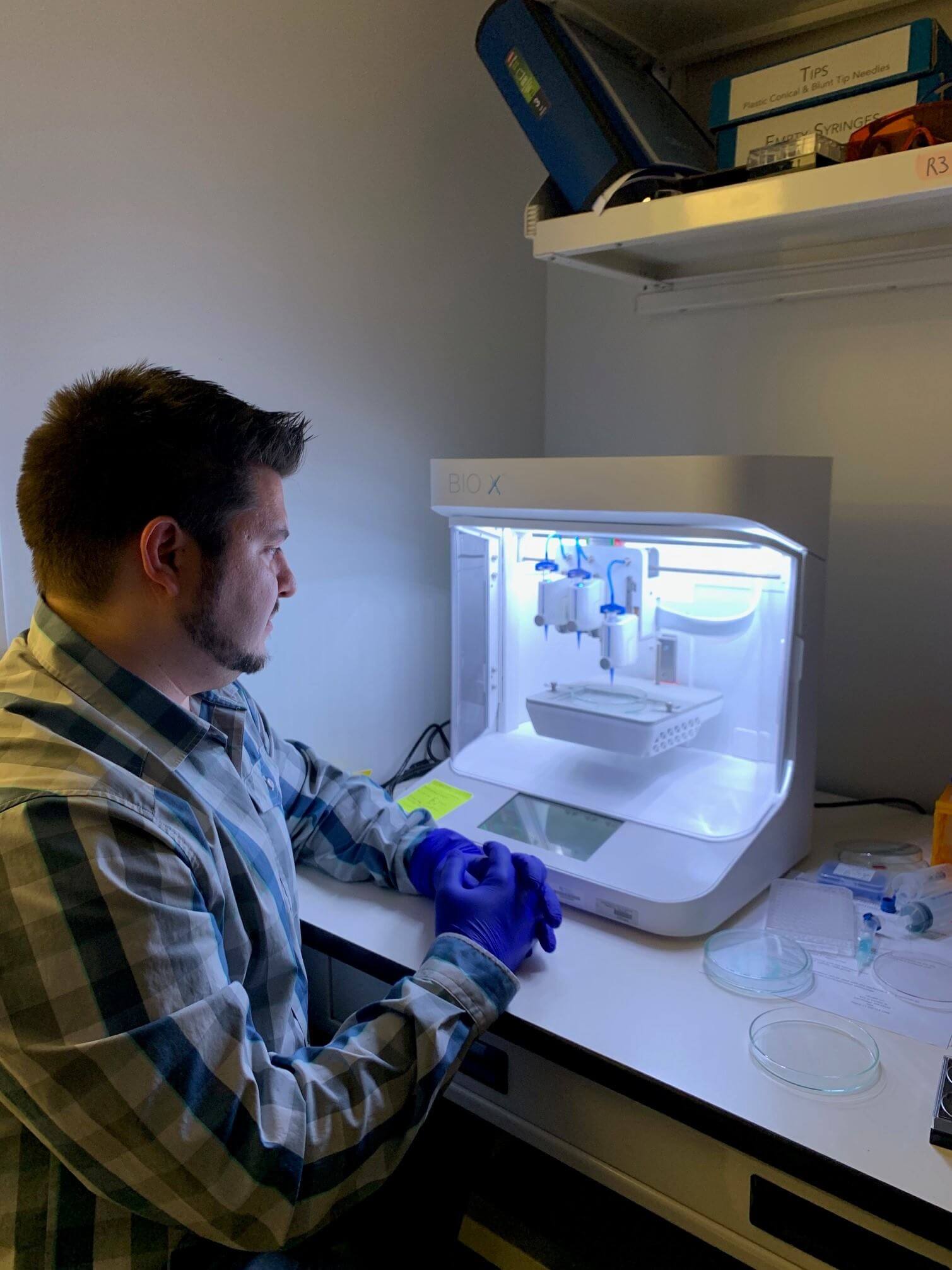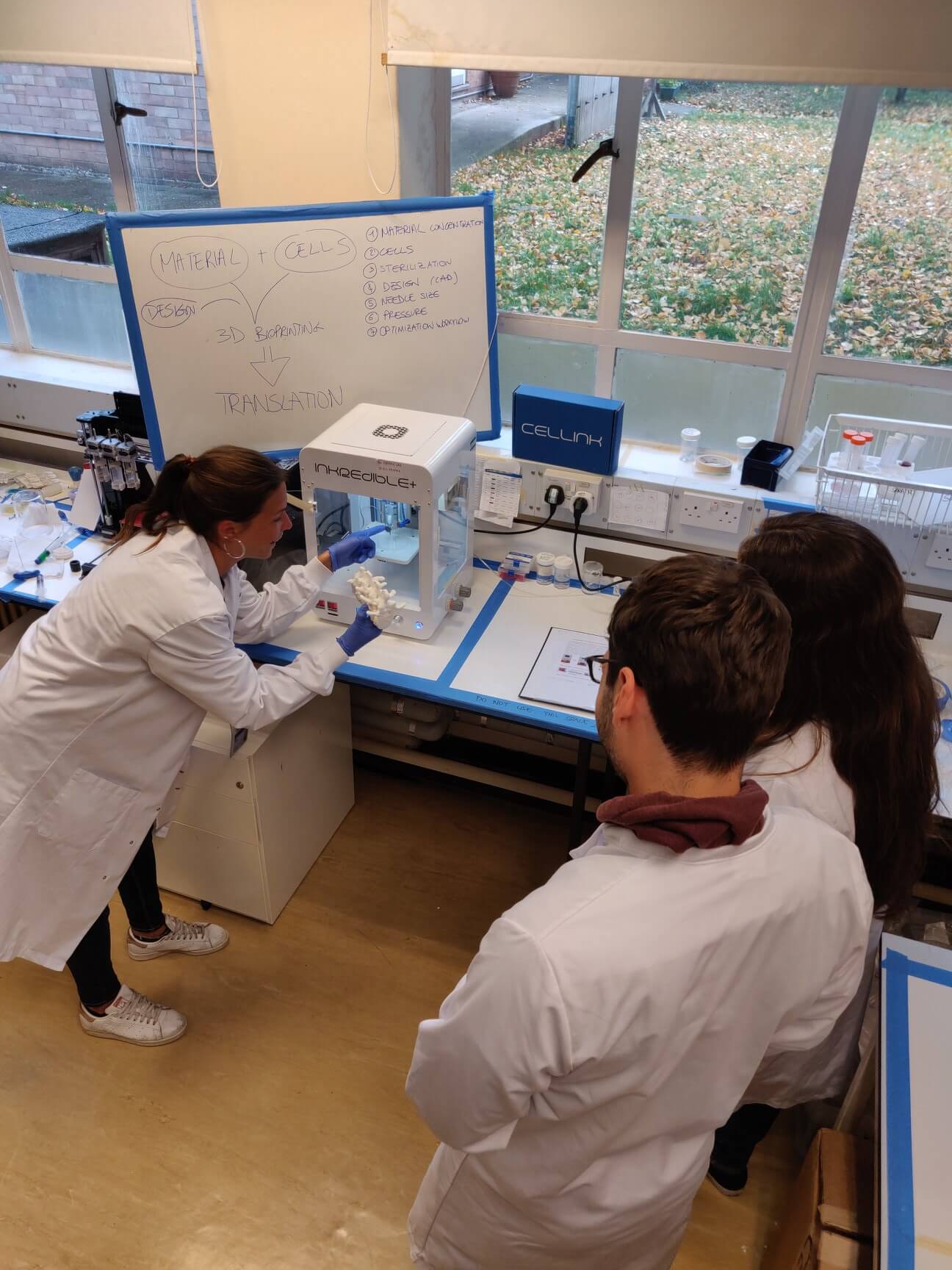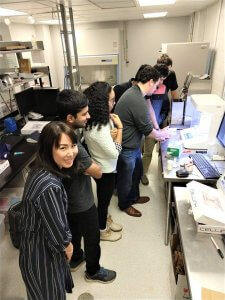 CELLINK announced the latest product in their line of specialized bioprinting technology, the newly designed BIO X6, which can leverage up to six different intelligent printheads to fabricate constructs with any cell type, enabling the production of any tissue found in the body. According to the company, “it’s never been easier to bioprint complex constructs”, claiming that with this new development it is possible to combine more materials, cells, and tools — and get results sooner — than before.
CELLINK announced the latest product in their line of specialized bioprinting technology, the newly designed BIO X6, which can leverage up to six different intelligent printheads to fabricate constructs with any cell type, enabling the production of any tissue found in the body. According to the company, “it’s never been easier to bioprint complex constructs”, claiming that with this new development it is possible to combine more materials, cells, and tools — and get results sooner — than before.
The product combines six printheads with CELLINK’s patented Clean Chamber Technology, dual high-power fans that produce positive air pressure inside the chamber, and intelligent exchangeable printhead technology. Giving the user freedom to combine multiple materials in one print, and the capability to create more complex architectures.
Handling the machine is pretty easy. According to company specifications, the user just needs to select and attach a printhead, load the bioink cartridges and press print, while the BIO X6 software and autocalibration system will take care of the rest.
Based on CELLINK’s award-winning BIO X platform, the new technology was developed to advance research and clinical applications in the bioprinting field. The system comes with a movable arm mount. Users can either control the printer through a Wi-Fi connection or through a detachable tablet on the movable arm mount. The wired version with an iPad surface lets researchers to enter the parameters with the swipe of a finger–even when their gloves are on. The iPad can be detached to take along for greater flexibility and can be connected directly to a computer to drag-and-drop the models in a matter of seconds.
“Organs and tissues are comprised of many different cell types. With the BIO X6, users can combine six or more cell types to print advanced organ and tissue models,” said Itedale Namro Redwan, Chief Scientific Officer at CELLINK.
“Being able to use different pressures, temperatures and printing methods simultaneously in six different positions is revolutionary. Users can mix the cells in each printhead with a tailored bioink, providing the cells with the biological environment they need to achieve the desired architecture,” he continued.
The BIO X6 is the only six-printhead bioprinter containing CELLINK’s adaptable modularity, making it a flexible high-throughput bioprinting platform. This means that up to six materials can be used simultaneously within the print. The company also claims that the user can designate printhead-specific parameters, cell densities, and cell types to incorporate complexity to meet a project’s needs. That lets you add more support to structures and vascular networks for example.
As stated by the company, the BIO X6 has mayor advantages, like a temperature-controlled printhead; electromagnetic droplet (EMD) printhead for fast drop-on-demand printing similar to inkjet capabilities; an HD camera for quality control and filament imaging; a pneumatic printhead for extruding a wide range of high and low viscosity materials; a thermoplastic printhead for bioprinting thermoplastic polymers; a syringe pump printhead, and a photocuring tool head for UV crosslinking.
Founded in Gothenburg in 2016, by Erik Gatenholm and Hector Martinez,CELLINK was the first bioink startup in the world and the creator of the first universal bioink. Today, they provide more than 50 different sterile and ready-to-use bioinks for various applications, from bioprinting cancer models to skin models and are compatible with any 3D bioprinting system. In 2018 it began printing tumors to combat cancer as part of a research project that doesn’t endanger human lives and developed the Ambassador Program, a sharing ecosystem for research projects in bioprinting for scientists and engineers to contribute to the evergrowing biotechnology community worldwide.
CELLINK believes that the platform can have a potential application in the fabrication of multifaceted dermal constructs, being able to create in a single print, trilayered constructs comprised of distinct subcutaneous, dermis and epidermis layers, along with vascular networks, sweat glands, and hair follicles. BIO X6 could also be applied to drug screening to aid in the fabrication of complex metabolic tissue models and enable the fabrication of advanced organ-on-a-chip models.
Before the BIO X6, the startup’s BIO X was the go-to bioprinter for life science companies, researchers and innovators, and the first bioprinter with exchangeable printheads. Today, the BIO X6 seems to go even further and be even more, versatile. Through being equipped with intelligent printhead mounts, users can upgrade their system as the company continues to develop printheads for the world of bioprinting.
The Swedish company, which hopes to progress the technology far enough to create replacement organs for transplant in humans in the next 15 years, could take researchers one step closer to complete organ engineering with their new platform.
[Images: CELLINK]
The post CELLINK’s New Bioprinting Platform for Complex Structures, the Bio X6 appeared first on 3DPrint.com | The Voice of 3D Printing / Additive Manufacturing.







